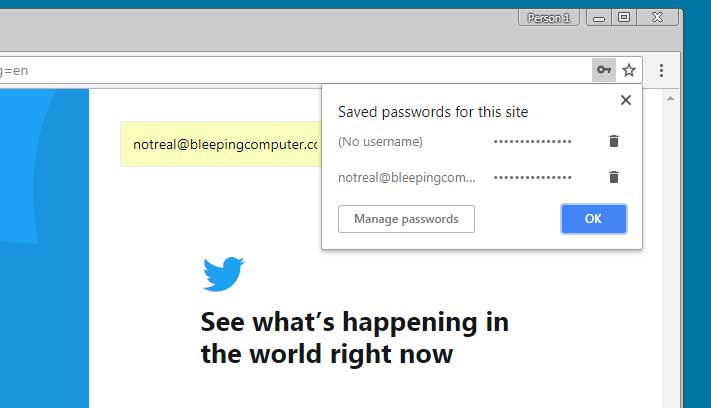

For example, if you have sign-in and search on the same page, you should use two form elements. Use a different for each UI component that needs a form. This makes your site accessible to screenreaders and other assistive devices, enables a range of built-in browser features, makes it simpler to build basic functional sign-in for older browsers, and can still work even if JavaScript fails.Ī common mistake is to wrap a whole web page in a single form, but this is liable to cause problems for browser password managers and autofill. It's generally better to use a plain old element. You might be tempted to wrap inputs in a and handle input data submission purely with JavaScript. These enable built-in browser functionality, improve accessibility, and add meaning to your markup. * Credential Management: to enable developers to store and retrieve password credentials and federated credentials programmatically.
#Chrome password generator change rule verification
This can allow users to select a phone number as an identifier (no need to enter an email address!) and also enables two-step verification for sign-in and one-time codes for payment confirmation. There are also two relatively new APIs not covered in this article which can help you build a better sign-in experience: * WebOTP: to deliver one-time passcodes or PIN numbers via SMS to mobile phones. If you have users in different parts of the world, you need to consider localizing your site's use of third-party identity services as well as its content. 12 best practices for user account, authorization and password management outlines core principles for running your own backend.
#Chrome password generator change rule how to
It does not explain how to build backend services to authenticate users, store their credentials, or manage their accounts. This article is about frontend best practices.


Enable the browser to suggest a strong password.

Use autocomplete="current-password" and id="current-password" for an existing password.Use autocomplete="new-password" and id="new-password" for a new password.Prevent mobile keyboard from obstructing the Sign in button.Keep passwords private-but enable users to see them if they want.


 0 kommentar(er)
0 kommentar(er)
